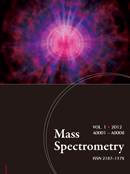3 巻, Special_Issue_3 号
the 62nd MSSJ Annual Conference
選択された号の論文の12件中1~12を表示しています
- |<
- <
- 1
- >
- >|
Special Issue of the 62nd MSSJ Annual Conference
Foreword
-
2015 年 3 巻 Special_Issue_3 号 p. K0008
発行日: 2015/04/01
公開日: 2015/04/15
PDF形式でダウンロード (29K) HTML形式で全画面表示
Review
-
2014 年 3 巻 Special_Issue_3 号 p. S0040
発行日: 2014/11/01
公開日: 2014/11/27
PDF形式でダウンロード (485K) HTML形式で全画面表示 -
2014 年 3 巻 Special_Issue_3 号 p. S0042
発行日: 2014/12/01
公開日: 2014/12/13
PDF形式でダウンロード (199K) HTML形式で全画面表示 -
2014 年 3 巻 Special_Issue_3 号 p. S0045
発行日: 2014/12/01
公開日: 2015/01/07
PDF形式でダウンロード (2821K) HTML形式で全画面表示 -
2014 年 3 巻 Special_Issue_3 号 p. S0047
発行日: 2014/12/01
公開日: 2015/01/24
PDF形式でダウンロード (732K) HTML形式で全画面表示 -
2015 年 3 巻 Special_Issue_3 号 p. S0049
発行日: 2015/03/01
公開日: 2015/03/07
PDF形式でダウンロード (6393K) HTML形式で全画面表示
Original Article
-
2014 年 3 巻 Special_Issue_3 号 p. S0041
発行日: 2014/12/01
公開日: 2014/12/16
PDF形式でダウンロード (803K) HTML形式で全画面表示 -
2014 年 3 巻 Special_Issue_3 号 p. S0043
発行日: 2014/12/01
公開日: 2014/12/27
PDF形式でダウンロード (989K) HTML形式で全画面表示 -
2014 年 3 巻 Special_Issue_3 号 p. S0044
発行日: 2014/12/01
公開日: 2015/01/24
PDF形式でダウンロード (575K) HTML形式で全画面表示 -
2014 年 3 巻 Special_Issue_3 号 p. S0046
発行日: 2014/12/01
公開日: 2015/01/07
PDF形式でダウンロード (585K) HTML形式で全画面表示 -
2015 年 3 巻 Special_Issue_3 号 p. S0048
発行日: 2015/02/01
公開日: 2015/01/24
PDF形式でダウンロード (5693K) HTML形式で全画面表示 -
2015 年 3 巻 Special_Issue_3 号 p. S0050
発行日: 2015/03/13
公開日: 2015/03/17
PDF形式でダウンロード (3069K) HTML形式で全画面表示
- |<
- <
- 1
- >
- >|
